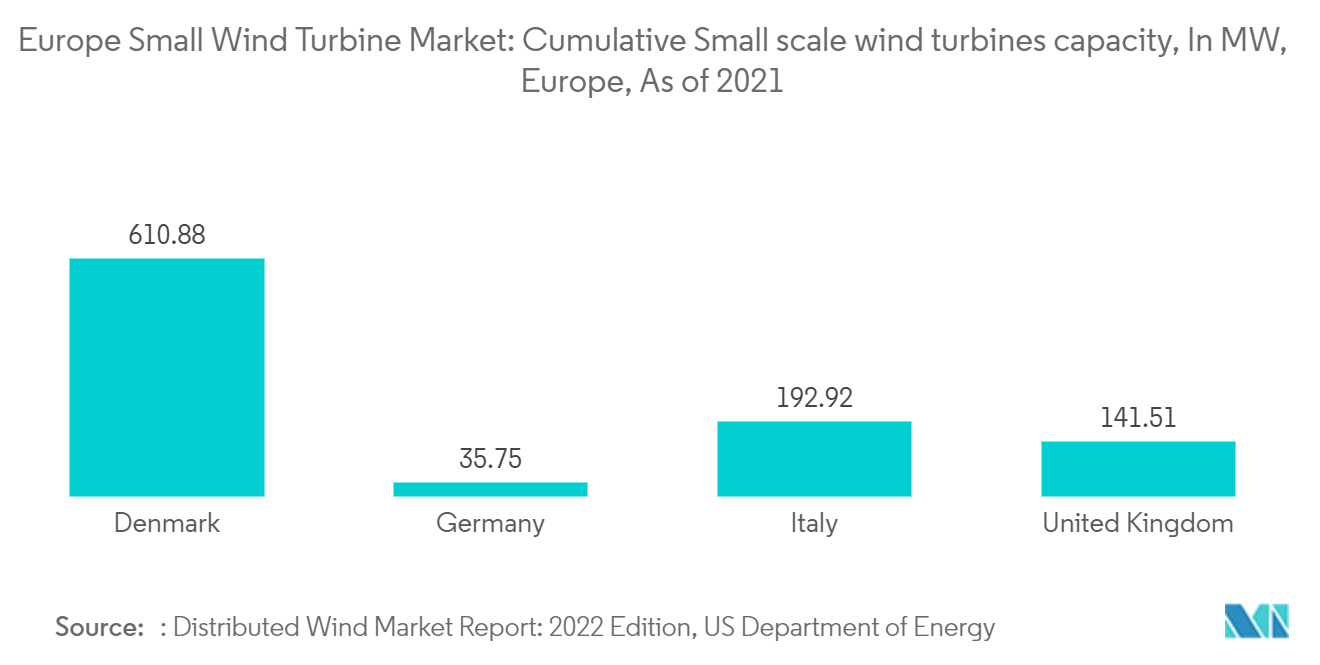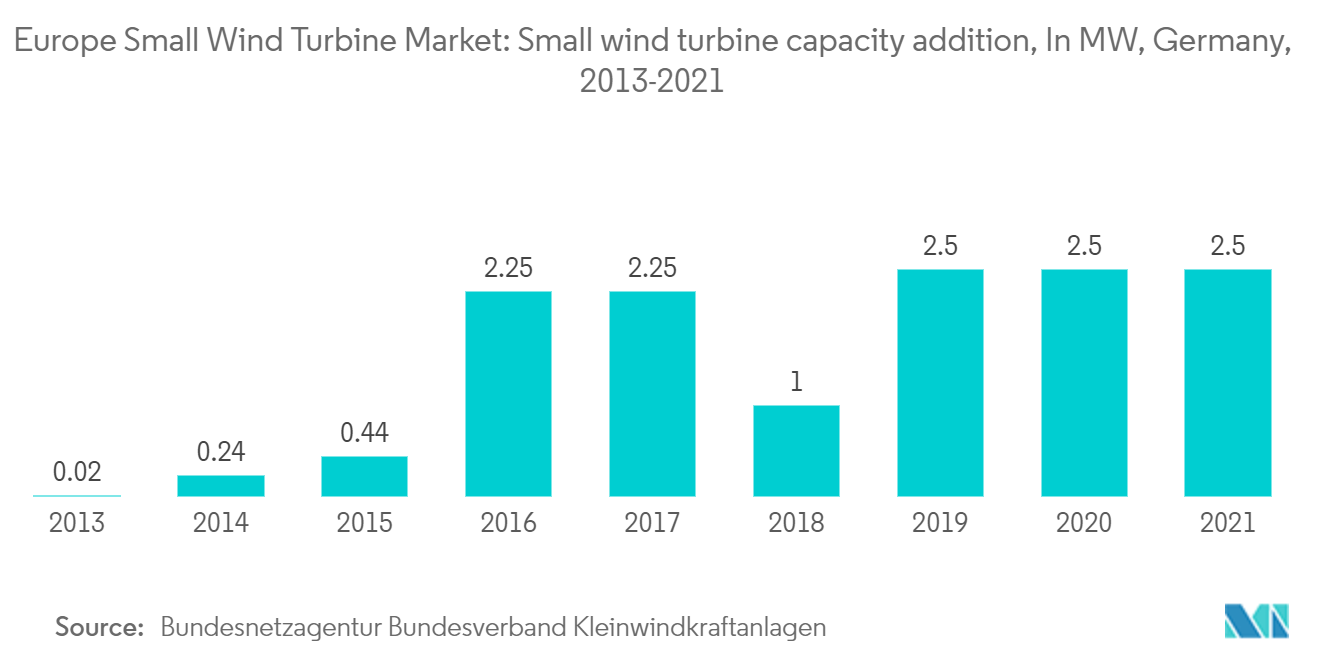Market Trends of Europe Small Wind Turbine Industry
This section covers the major market trends shaping the Europe Small Wind Turbine Market according to our research experts:
The Horizontal Axis Wind Turbine Segment is Expected to Dominate the Market
- A majority of small wind turbines manufactured today are horizontal-axis, upwind machines that have two or three blades, usually made of composite materials such as fiberglass.
- A horizontal axis wind turbine (HAWT) has its main rotor shaft and electrical generator at the top of the tower, and a simple wind vane is used to point the turbine toward or away from the prevailing wind.
- Small wind turbines consist primarily of horizontal axis wind turbines that have been in production for over three decades, whereas most small vertical axis wind turbines (VAWTs) have been produced within the last decade. Due to the technological and economic advantages associated with the small HWAT, it receives considerable attention. In addition to low-cost wind energy generation, small horizontal axis wind turbines can be maintained easily and without a skilled workforce.
- Furthermore, there are two types of small HAWTs. The first is a typical three-bladed design, while the second is an aerodynamically complex, shrouded type. Both types have a similar rate power of approximately three kW.
- Among the advantages of small HAWTs is their tall tower bases, which allow them to gain greater access to wind at sites with wind shear (where variations in wind velocity occur at right angles to the wind direction and tend to exert a turning force). As a result of stronger wind access, power generation is likely to increase. This is likely to result in moderate deployment of these units during the forecast period.
- Small wind turbines are used throughout the developing and developed nations across the region and are used mainly in rural or remote settings. As per the historical data by the US Department of Energy in their Distributed Wind Market Report: 2022 Edition, the growth in the SWT market is restricted to countries like the United Kingdom, Denmark, Italy, and Germany.
- Therefore, owing to the above points, the horizontal axis wind turbine segment is expected to dominate the market during the forecast period.

Germany is expected to dominate the Market
- Germany has Europe’s largest onshore wind generation capacity of over 62.85 GW as of 2020. The country is also considered among the top three markets in the onshore wind turbine industry.
- As of 2021, the country’s small wind turbine capacity of turbines with capacity of up to 50kW stood at 35.75 MW. However, despite being one of the largest onshore wind turbine markets in the world, the small wind turbine deployment in the country lags behind some of the European nations, like Denmark, Italy, and the United Kingdom. The main reason behind the relatively slow growth of the market is the low feed-in tariffs for small wind turbines.
- Most of the countries in the region offer higher feed-in tariffs (FiT) for small wind turbines compared to small solar power plants. The situation is the opposite in Germany, where the small solar power plant owners enjoy higher FiT compared to small wind turbines, which, coupled with better cost competitiveness of small solar power plants restrained the small wind turbine market in the country.
- Though the FiTs for small wind power are lesser compared to FiT for solar in the country, the small wind power tariffs are still comparable to other nations. The FiT for small wind power in the country is around EUR 8.38 ct/kWh. Moreover, unlike many other nations in the region, the Government of Germany intends to continue the FiT program, which provides certainty to small wind turbine operators in the country.
- The small renewable power market in the country is dominated by solar power. However, as solar power is an intermittent source and cannot provide power during the night time, the wind turbines, which produce most of their energy during the evening and night time, can complement the solar power plants.
- Competitive FiT, more certain policies regarding small wind power compared to other nations in the region, and the ability of wind turbines to complement the solar power plants have led to the growing deployment of small wind power, during 2015-2021, as a part of the small scale solar-wind hybrid plants. The ability of small wind turbines to complement the small-scale solar power plants is expected to drive the market during the forecast period.

